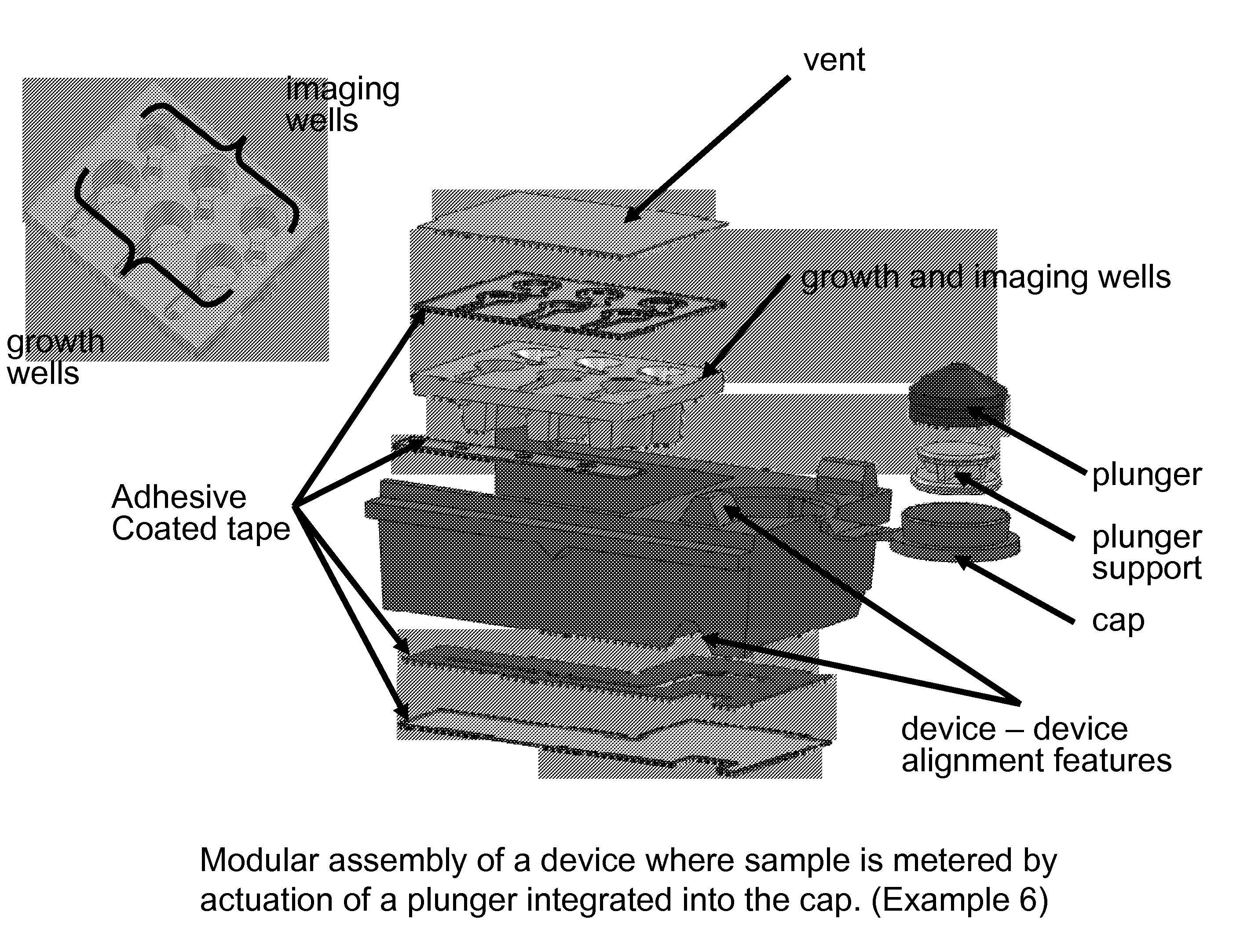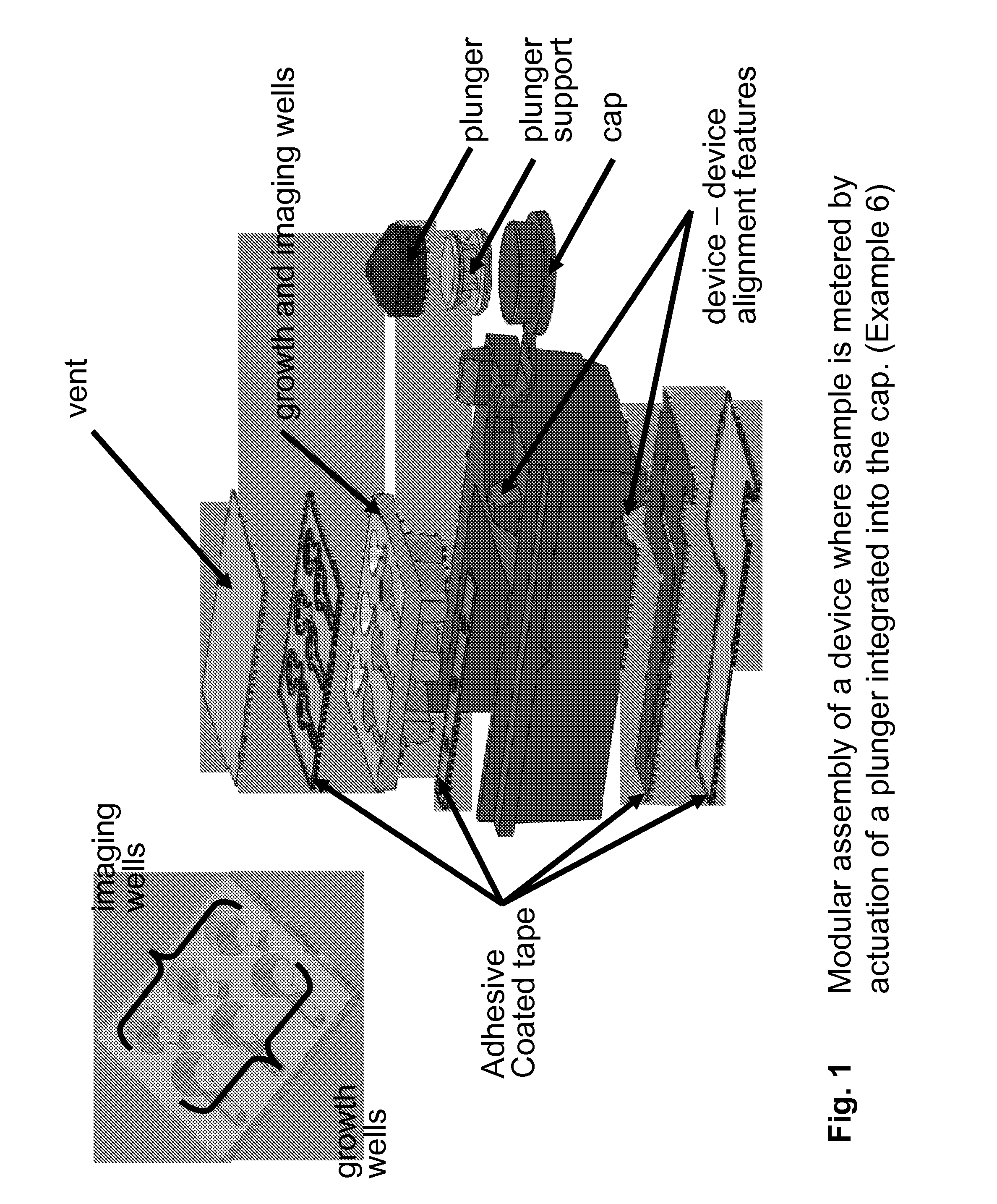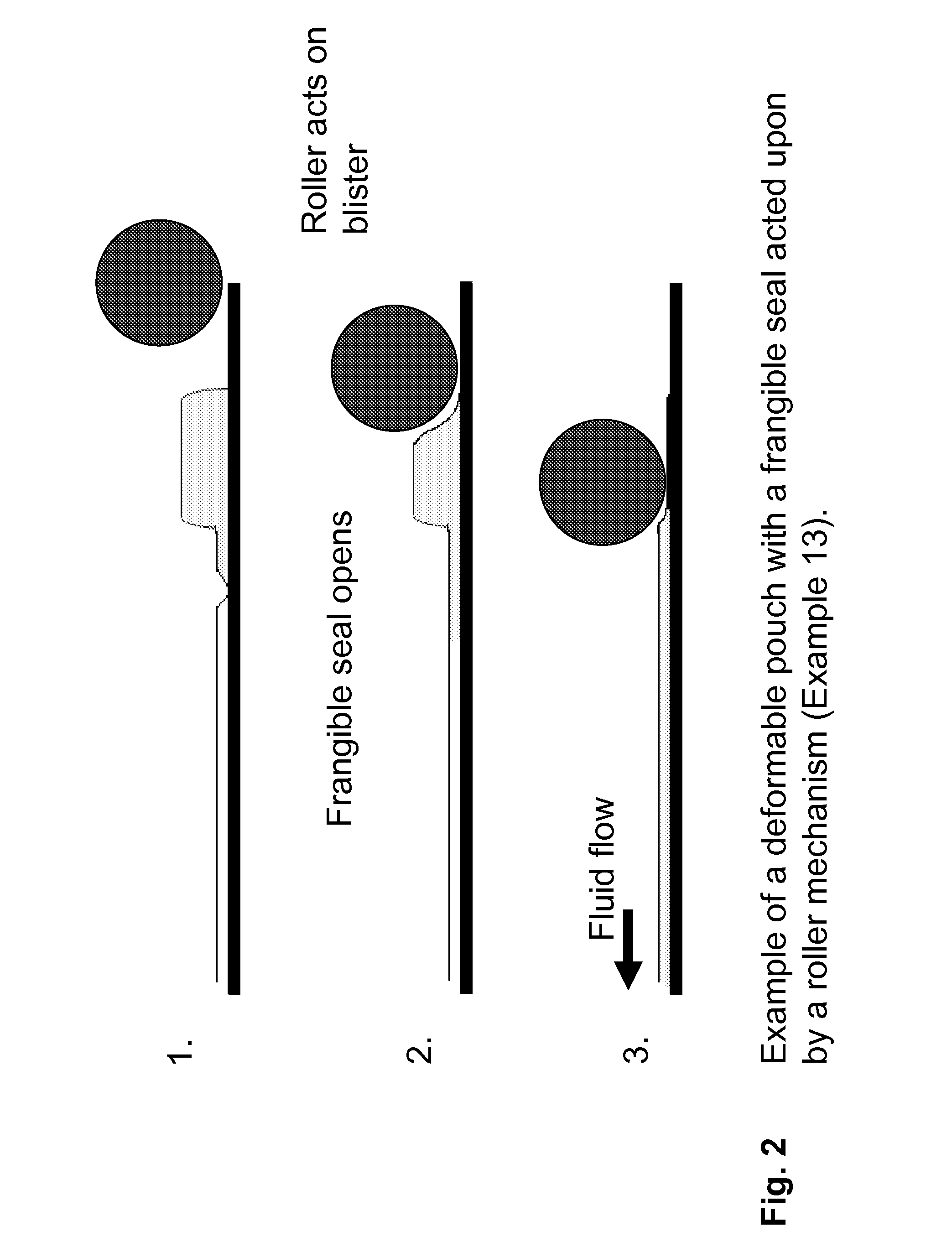Kits and devices for detecting analytes
a technology of analytes and kits, applied in the field of kits and devices for detecting analytes, can solve the problems of inability to meet the needs of high throughput testing on automated platforms, insensitive, and undesirable user labor in the washing steps, so as to reduce the cost and complexity of automated operations, and improve the accuracy of detecting analytes
- Summary
- Abstract
- Description
- Claims
- Application Information
AI Technical Summary
Benefits of technology
Problems solved by technology
Method used
Image
Examples
example 1
Use of Liquid Reagents to Image Individual Labeled Target Complexes
[0217]Overview. There are various forms and ways to stabilize the reagents that are placed on the device. This example details one method for housing liquid reagents including target-specific fluorescent particle signaling moieties, target-specific magnetic selection moieties, and a dye cushion reagent (this reagent reduces assay background and allows assay of target in a imaging well without washing) and other assay components. The reagents in this example were dispensed in layers in multiple pipetting steps. This example teaches how to formulate the liquid reagents so that they can be used to perform an assay on a human plasma sample to measure the concentration of human thyroid stimulating hormone (hTSH).
[0218]Methods. Anti-hTSH antibody labeled fluorescent particles (anti-hTSH FP) were prepared by chemically linking carboxylated 500 nm fluorescent particles (Invitrogen cat#8813) with free amino groups on mouse mo...
example 2
Stabilization of Reagents by Lyophilization
[0224]Overview. There are various ways to stabilize the reagents contained in the device. Drying reagents within the device can increase stability while maintaining functionality, ultimately improving the shelf-life of the device. A longer shelf-life device can decrease costs to the user by ensuring devices will yield accurate results over longer periods of time. This example shows stabilization of reagents by lyophilization of dye-cushion, target-specific immunoparticles, and other reagents.
[0225]This example teaches how to formulate dried reagents using lyophilization that can be readily rehydrated upon introduction to liquids without a specific module for mixing. On-board reagents can be lyophilized as one or more layers in one or multiple freeze-drying steps with the methods below to prepare a single layer, discrete spheres, or dual layer reagents.
[0226]Method. Reagents were lyophilized for an assay for human thyroid stimulating hormone...
example 3
A Simple Device for Testing a Single Sample
[0234]Overview. A simple embodiment of the invention in this example has a single imaging well with integral dried reagents (including target-specific selection moieties, target-specific signaling moieties, and dyed cushion); a cap; and features for alignment in an analyzer. This device allows powerful but cost-effective analysis that is useful in scientific, clinical, environmental and manufacturing quality laboratories. Multiple test types are possible by changing the contents of the reagents. In this example, sample is added manually using a pipette. The imaging well is compatible with high resolution imaging techniques.
[0235]Methods. The structure of the device includes modules that have been integrated into a single fabricated component (FIG. 4). The modules that are integrated into the single component include an imaging well, dried reagents, and a cap that is attached by a tether. The cap is sealed by mechanical snapping. The device ...
PUM
| Property | Measurement | Unit |
|---|---|---|
| depth | aaaaa | aaaaa |
| depth | aaaaa | aaaaa |
| depth | aaaaa | aaaaa |
Abstract
Description
Claims
Application Information
 Login to View More
Login to View More - R&D
- Intellectual Property
- Life Sciences
- Materials
- Tech Scout
- Unparalleled Data Quality
- Higher Quality Content
- 60% Fewer Hallucinations
Browse by: Latest US Patents, China's latest patents, Technical Efficacy Thesaurus, Application Domain, Technology Topic, Popular Technical Reports.
© 2025 PatSnap. All rights reserved.Legal|Privacy policy|Modern Slavery Act Transparency Statement|Sitemap|About US| Contact US: help@patsnap.com



